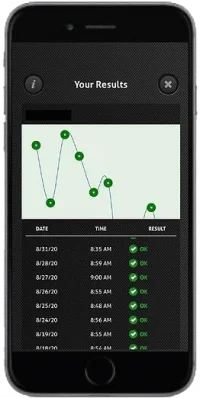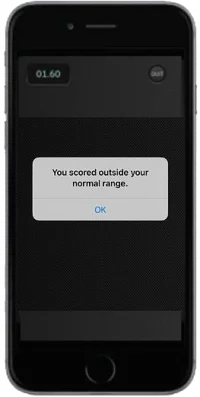Home » Alert Meter
Thousands of workers show up to work every day fatigued, distressed, ill, intoxicated, or otherwise impaired. AlertMeter® is the only real-time fit-for-work test that accurately identifies these impairments before incidents can happen.







Mental distress often leads to accidents. The AlertMeter® Distress Detector identifies signs of distress early to prevent incidents.
Fatigue is a major safety risk and reduces productivity. Use the AlertMeter® Fatigue Finder to identify and address fatigue before it affects performance.
Fatigue is a major safety risk and reduces productivity. Use the AlertMeter® Fatigue Finder to identify and address fatigue before it affects performance.
Reduce accident severity by up to 68% with the AlertMeter®.
Increase productivity by 11% while prioritizing safety with the AlertMeter®.
Lower workers’ comp claims and accident costs by 70%.

Up to 90% reduction in drug-testing costs; up to 70% reduction in worker’s comp claims; projected 35% overall cost reduction.
Boost morale and productivity as well as safety: Increased worker focus; up to 11% increase in productivity; 35%
reduction in employee turnover; up to 68% reduction in accident severity; increased visibility and communication; more positivity all around.
When workers arrive on-site, they take the AlertMeter test on company tablets or their own smartphones. It takes 10 initial tests for the AlertMeter to recognize each user’s normal level of alertness and individual cognitive behavior. After that, the test will accurately identify when they’re outside their normal range of alertness.
The designated supervisor or manager on-site will be automatically notified if a worker is outside of his normal range of alertness, or is behaving unusually.
The designated supervisor or manager will meet with the worker face-to-face, discuss a way to remedy their alertness, and determine whether they will need to be reassigned to a non-safety sensitive task until their alertness level is normal.

Schedule a Demo
Consult with a safety expert to customize the best plan for your industry, budget, and unique challenges.
Download the AlertMeter®
Access the app on your tablet or smartphone and log in with your credentials.
Take the Test
Establish your baseline alertness level. Results are categorized as OK, Guarded, or Outside Normal Range.
Get Notified
Receive instant alerts when a worker’s alertness falls outside the normal range.
Save Money, Save Lives
Experience reduced safety incidents, improved productivity, and lower accident costs.



I would like to make a booking to attend in person at the clinic.

I would like to make a booking as a private patient on my own behalf.
I would like to make a booking on my company/employer's behalf.